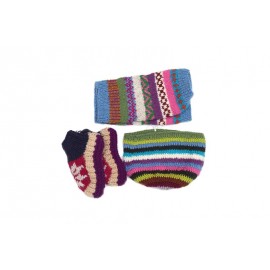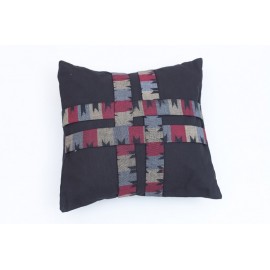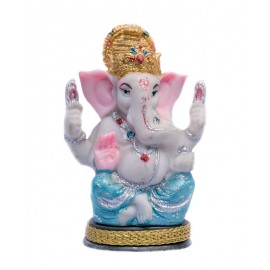Handicrafts in Nepal | Handmade crafts | Khukuri | A holy skill in Nepali Hands
Handicraft refers to the product or range of products made by an individual’s hands with the specific skills and knowledge possessed and gained from one generation to another. Talking about the handicrafts in Nepal’s perspective, Nepali handicraft has always been a part of this great Himalayan civilization. The history of handicrafts in Nepal goes back to the age when people used to make products for their necessities. As the civilization started sharpening its shape, the art of making handicrafts is being integrated continuously with the socio-cultural and ethical values. Nepali handicraft has its proud history with various references in many great correspondences. The great Kautilya, in his book Kautilya’s Arthashastras, has appreciated the Nepali handicrafts namely “Bhingisi” and “Apasáraka” which are rainproof blankets made of eight pieces together, as the products of premium quality. Furthermore, woolen made Nepali handicrafts are appreciated in the Jain religion’s epic “Brihatakalpasutra Vhashya”.
Handicrafts Depicting socio-cultural values:
Handicraft reflects the socio-cultural values of the country where it is made. Nepali handicrafts have been making a tremendous contribution to society by way of portraying Nepali culture on the crafts since its inception. This may be in the form of statues, garments, weapons, paintings, etc. For example – Gorkhali Khukuri a weapon used by the Gurkhas during the war reflects the bravery and loyalty of the Gurkhas all over the world, Kaal Bhairav statue as mainly made by the Newar community in Kathmandu reflects our beliefs on Lord Kaal Bhairav, Dhaka Topi – a cap mainly wore by Nepali speaking people reflects the tradition of wearing the cap in function and festivals and similarly, the Mithila Paintings depicts our cultural belief in the form of paintings. Hence, the Handicraft is not merely the craft, but also a strong medium of spreading our socio-cultural beliefs all over the world.
Handicrafts Contribution to the economy:
The history of the Nepali handicrafts industry is very long. Initially, the handicrafts made in Nepal were mainly exported to China (especially Tibet) and India. These items were mainly made of woolen, wood & metal. However, the systematic export of handicrafts was started in the early ’70s. Currently, handicrafts made in Nepal are being exported to more than 85 countries. The major importers of handicrafts are the USA, Britain, India, Canada, Germany, Japan, Italy, France, Australia, Netherland, and China. It is to be noted that the total export of handicrafts affected during the mid-August 2017 to mid-July 2018 is Rs 680.276 million (data by the Trade and Export Promotion Centre) which is really an icebreaking factor to restrain the mounting trade deficit from endangering our economy.
Another contribution of handicrafts to the economy is their labor-intensive nature. Every year thousands of Nepali youths are heading to Gulf and other countries for seeking employment which is resulting in a brain drain situation. Handicraft explores the job opportunities for those youths within the country. On average, a medium-class handicraft business creates job opportunities for 40-50 people. Thus, the handicraft industry is not only creating jobs for job seekers but also contributing to the country’s export and preserving and spreading the country’s socio-cultural values at the same time.
Handicraft products are mainly categorized into two parts namely textile products and non-textiles products. Textiles products mainly comprise woolen goods, Pashmina products, silk products, felt products, hemp goods, cotton goods, alloy goods, and Dhaka products. Similarly, non-textiles products mainly comprise jewelry, metal crafts, wood crafts, handmade paper, bones & horn products, ceramics products, crystal products, leather goods, Thanka, stone craft, bamboo products, and incense.
Problems faced by the Nepali handicraft industry:
Though there is a huge demand for Nepali handicrafts in the foreign country, the industry has not groomed due to the following reasons:
1. Lack of education and training
Though the handicraft is making a tremendous contribution to our economy, there is no single institution in our country that provides formal education or training of handicraft and prepares skilled manpower to the industry.
2. Lack of platform to promote the products
Products will get their saturation only when a robust platform will be provided to them. For example, only a few trade fairs are being organized in our country to promote handicraft products throughout the world.
3. Lack of interest of youths on handicraft
The Nepalese youths do not take the handicraft industry as their career option due to the best job opportunities in other corporate sectors.
4. Lack of government support
There is a lack of government support to promote the handicraft industry due to poor laws and policy, export incentives, tax exemption, access to the international trade fair, etc. However, the government has recently taken some steps in this regard. For example, a cash incentive of 2% is being provided in the export of products which is still not sufficient to boost the handicraft industry.
Choicemandu’s contribution to Nepali handicraft
We care a lot about our Nepali handicrafts not only to boost our export business but also to spread our socio-cultural values all over the world. We provide our online platform to Nepali handicrafts to promote their business by facilitating the access of mass of the customer all over the world at one click. We have extended our exports to the countries Like USA, France, Italy, Germany, and Hong Kong. We are in process of adding more countries in the coming future. We are working at our best to extend our services to the Nepali handicrafts through all possible means and mediums.

-1200x400.jpg)




-350x250-150x150.jpg)
-350x250-150x150.jpg)
-350x250-150x150.jpg)
Leave your comment